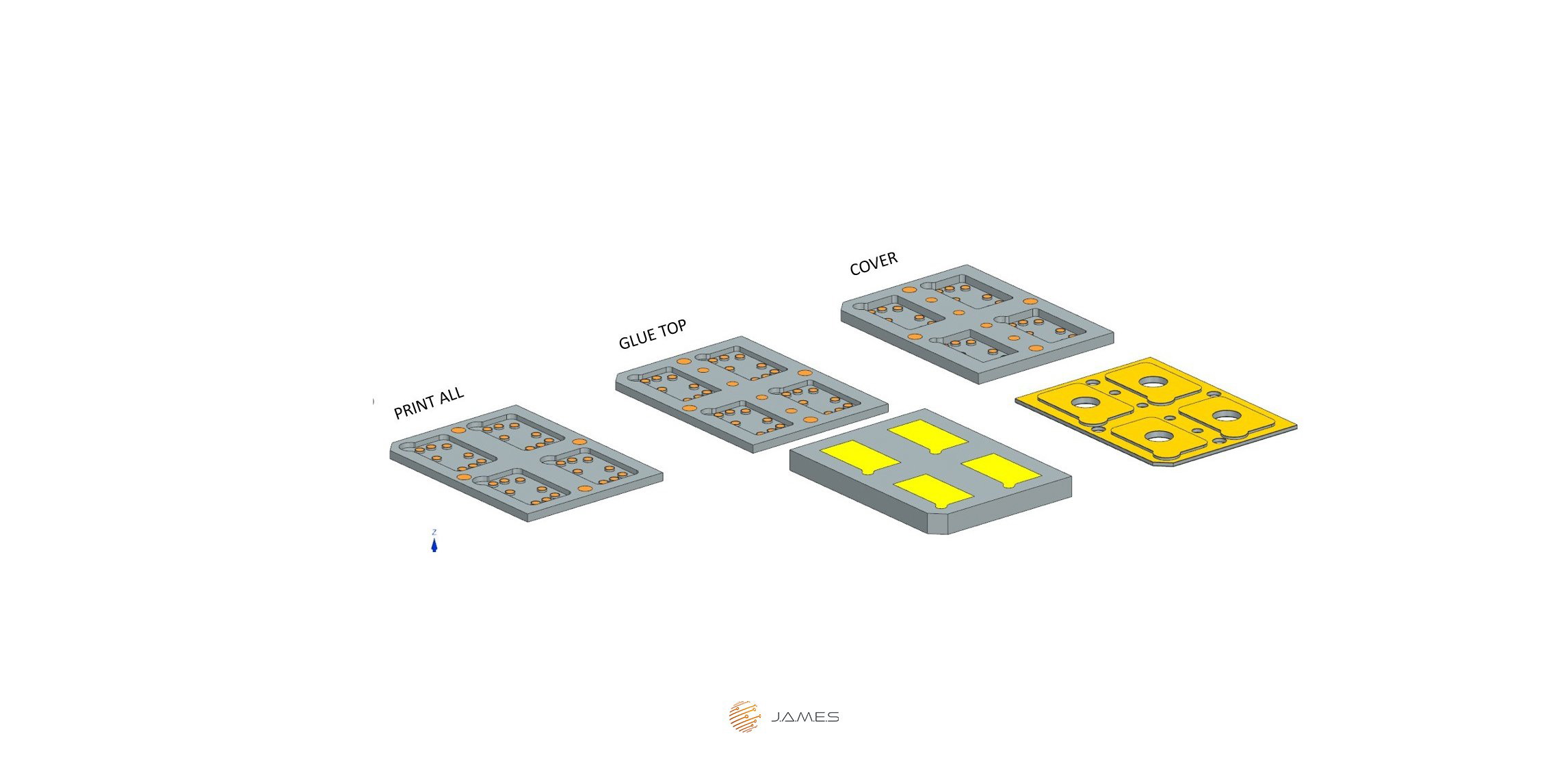One Print-Job In Two Parts
Concept
This AME design has the status of concept. A first design concept is established, a complete explanation of the targeted functionality is included, and the targeted printer technology has been provided.

Advancing System-in-Package (SIP) Manufacturing with Nano-Dimension Printers
Discover a novel strategy to take new steps in SIP manufacturing with Nano-Dimension printers to improve design flexibility and beat the limitations in the technology of today.
Introduction
This will be a big step ahead in SIP technology with the Nano-Dimension printers and hence faster SIP realization, good design flexibility, and increased versatility. Our standard model for die placing follows the process of splitting into two print jobs and printing one above the other. This paper is an attempt to look deeper into the methodology that envelops future applications and what would be possible with this existing technology.
Methodology for Die Placing
Our approach comprises a generic model that provides the template for die placing split into two print jobs. The first print job is that of the base layer, and the second is printed on top of the first. This approach uses the strengths of the Nano-Dimension printers in making SIP fabrication faster and more flexible. The possibility of integrating high-resolution inspection during print and setting the starting position on the x-y plane secures the alignment of layers, which is particularly important for the integrity of the final product.
Future Fields of Application
This technology is applicable to so many fields. One can do real-time monitoring with this technology and make adjustments for premium print quality, as the inspection resolution is high. The ability to shift the starting position on the x-y plane makes it possible, through camera use, for accurate layer matching important for design with complex multi-layers. It opens up a new window of application in the area of medical devices, aerospace, and consumer electronics, where precision and reliability are highly important.
Current Technological Limitations
Despite the promising strides, several limitations must be addressed:
- Starting Print from a Custom Height: One of the biggest challenges is to start the second print job from the correct height without damaging the print heads.
- Layer Alignment: The second print has to exactly align with the first. That's where structural integrity and functionality are held together.
- File Management: There would not be a need to share STP files at present, which is convenient but might also have the unintended consequence of reducing current interoperability with other systems.
Design Experiences and Solutions
During our experiments, we faced and solved several problems:
- Custom Height Adjustment: By setting the "pcbj.info" file at an initial custom height, we can support initiating the second print job without any collision of printheads.
- Making the Print Position Central: In order to make both models positioned centrally with one another, we used the "adding material" button for the second model and placed it on top of the first model. We then deleted the previous model materials so that they did not interfere.
- Surface Integrity Maintenance: The stopping of the vacuum was insured against and the touching of the Kapton surface avoided for the maintenance of the print surface integrity.
Conclusion
The use of Nano-Dimension printers in SIP manufacturing really is an advancement in the field. From dealing with layer alignment issues to making numerous adjustments with custom heights, we have therefore developed a reliable methodology for making multi-layered electronic components. Although recent limitations are noted at this stage, current research and development give promise of passing these barriers, adding more to the promising capabilities and applications of this innovative technology. Altogether, the future of SIP manufacturing looks promising, as some of the changes planned might help revolutionize several industries in terms of design flexibility and production efficiency.
Key Features
Related Articles

Horizon Microtechnologies - Using The BMF MicroArch S240 System






